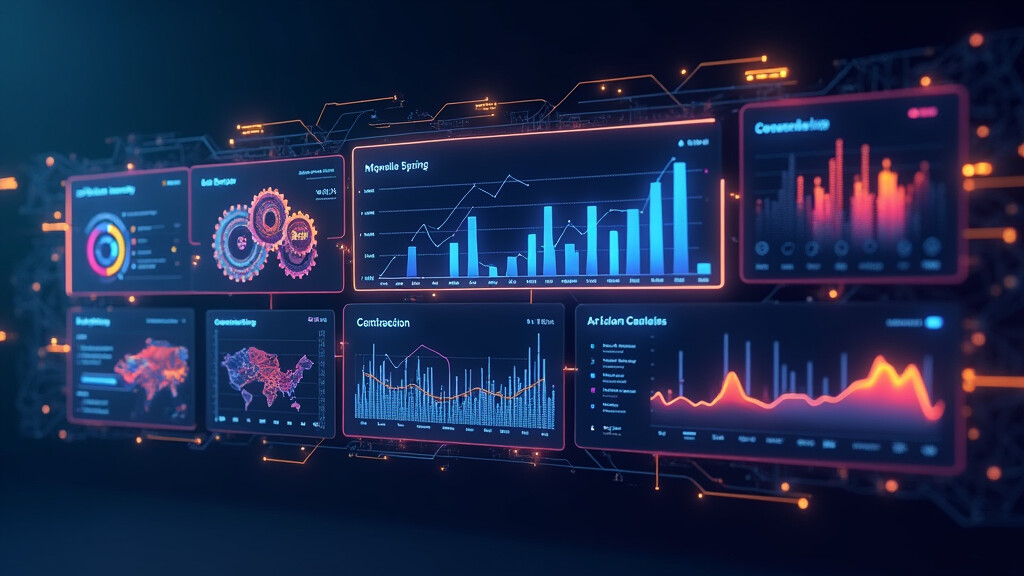AI powered marketing automation makes it possible for businesses of any size to reach more customers and smooth the way for their marketing. While phrases like “machine learning” and “automation tools” might sound technical at first, these solutions take much of the guesswork and manual labor out of everyday marketing. We want to break down what AI powered marketing automation means, how it works, and what you might want to know before you get started.

What Is AI Powered Marketing Automation?
AI powered marketing automation uses artificial intelligence to plan, launch, and optimize marketing campaigns without constant hands-on management. With these tools, tasks like sending emails, posting social media updates, and tracking customer behavior happen automatically based on user activity and smart algorithms.
We use the term “AI” here to mean systems that can analyze data, spot trends or changes in customer patterns, and make decisions fast. For example, AI automation can decide the best time to send a marketing email so it lands at the top of someone’s inbox. This approach goes beyond simple automation, like scheduling posts or generic email blasts. It lets businesses deliver messages that feel personal and arrive at the right time, all while collecting useful insights about what works and what doesn’t.
How Does AI Marketing Automation Work?
Understanding the basics makes everything less mysterious. AI powered marketing automation brings together several technologies to help manage campaigns efficiently. Here’s how the main parts fit together:
- Data Collection and Analysis: The system captures information from customer interactions, website visits, email opens, and social media engagement.
- Customer Segmentation: AI reviews the data to group people with similar behaviors or interests. That way, each group can receive content that matches what they’re most likely to respond to.
- Personalization: The platform crafts tailored messages, such as special product recommendations or personalized email offers, based on the segments, previous purchases, and behavior patterns.
- Automated Execution: Instead of manually scheduling each email or post, the tool sends communications at the best moment and monitors responses right away.
- Performance Optimization: AI can see which tactics work best, then adjusts future campaigns. It might switch ad spend to top performing channels or tweak messaging for better open rates.
This process turns massive data streams from websites, emails, and social networks into practical actions that drive results. We’ve seen simple changes, such as adjusting the day of the week for emails, make a noticeable impact, and AI automation does this automatically dozens of times a week.
Getting Started with AI Marketing Automation

AI can sound complex, but jumping in isn’t as tough as it seems. Most platforms are designed for everyday users, with step by step guides and templates. We usually recommend starting in these areas when trying out AI marketing:
- Email Campaigns: Scheduling emails, customizing content based on customer interests, and tracking open rates, all without heavy lifting.
- Social Media Automation: Planning posts ahead of time, tracking engagement, and using AI suggestions for content improvement.
- Ad Targeting: Setting up ads that adapt in real time, showing up for people who are more likely to buy based on their browsing behavior.
- Lead Scoring: Using AI to identify which leads are most likely to turn into customers, helping sales teams focus their efforts more efficiently.
Trying out one tool before expanding to others can help you find your comfort zone while seeing quick results. Even sending personalized birthday offers over email can be a great starting point.
Things to Consider Before Choosing an AI Marketing Automation Tool
Choosing the right platform can be overwhelming because so many options exist. We look for a few details to help narrow down the choices and make the experience smoother.
- Integration with Current Tools: Check if the new system connects smoothly with your website, CRM, or current marketing apps.
- Ease of Use: Some solutions are complex, while others offer drag and drop interfaces that are easier to learn.
- Data Privacy and Security: Make sure the platform follows good security practices to protect customer information.
- Analytics and Reporting Features: The tool should give you clear, useful reports that show whether your campaigns are working.
- Customer Support: Fast, reliable help is really important as you set up and troubleshoot new features.
Integration with Current Tools
Having marketing automation that works with what you already use saves a lot of time. For example, if we have customer details in our email platform and ecommerce orders in Shopify, we want my automation tool to pull data from both. This lets us send receipts, reminders, or product suggestions without any duplicate data entry.
Ease of Use
Some AI tools are built for data scientists, while others are meant for regular marketers like us. We look for a clear dashboard and easy guides. It’s smart to try a free trial before making a final decision to see if the interface fits your way of working.
Data Security
With personal contacts and purchase history involved, secure handling of information becomes super important. Checking a tool’s security features and reading reviews helps protect your business and your customers.
Analytics and Reporting
Clear reports help you track if people open emails, click links, or buy after seeing your messages. We depend on these reports to spot trends and decide which campaigns to repeat and which to pause. Good reporting also makes it easy to show results to your employer or team and helps steer your future campaigns.
Advanced Tips for Getting More from AI Marketing Automation
Once you’re confident with the basics, you might be ready to push your marketing a bit further. Here are some pointers from our own experience that can help you get more out of these tools:
Go Beyond Basic Personalization: Instead of just using someone’s name in an email, try delivering unique coupons or product recommendations based on past purchases or browsing activity. Sending a relevant product suggestion can increase your sales while making the customer feel noticed.
Test and Tweak Regularly: AI tools work best when you run experiments. Testing two subject lines or ad images can uncover new tactics for connecting with your customers. You might find that a playful tone works better, or that your audience opens emails more often on Fridays. Don’t be afraid to test small changes and see what sticks.
Explore Predictive Analytics: More advanced tools can show when someone is likely to buy again or if a lead might be about to leave. Acting on this information can add to your sales and improve retention, giving you an edge even against bigger competitors.
Automate Lead Scoring: Let AI sort which contacts are hot leads and which still need nurturing. This way, your sales team can spend more time closing deals and less time guessing who to call next, making your marketing and sales pipeline more efficient.
Using these strategies has helped us connect with customers more smoothly and spot opportunities we would otherwise miss. Remember, even small quick wins, such as tweaking email timing, can set your marketing up for major improvements over time.
Real World Uses of AI Marketing Automation
AI powered tools are used by businesses big and small for practical results. We’ve seen these approaches make a difference in different scenarios:
- Welcome Series Emails: Automatically sending a sequence of friendly emails after someone joins a mailing list introduces your business and highlights top products. Setting this up ensures new subscribers get to know you and builds trust right from the start.
- Dynamic Content: Changing what someone sees on your website or in your emails depending on their interests and previous actions makes your messaging relevant and more engaging. For example, showing shoe recommendations to a visitor browsing sneakers is a simple way AI can help drive sales.
- Retargeting Campaigns: Serving Facebook or Google ads to visitors who looked at certain products but left without buying brings them back for another look. This gentle nudge, powered by AI, often improves conversion rates and helps you get more out of every website visit.
Even a local retail shop can use AI marketing automation to remind customers about loyalty rewards or alert them of a new product line, all with much less manual labor. By putting these tools to work, small businesses can create next level cool experiences, helping them stand out from larger chains and online giants.
Frequently Asked Questions
Below are answers to some things many people wonder about getting started with AI powered marketing automation:
Question: Does AI marketing automation really work for small businesses?
Answer: Yes, AI powered tools can help businesses of any size save time and reach more customers. Many platforms offer affordable starter plans or free tiers for small businesses trying automation for the first time. In fact, automating just basic tasks, such as follow up emails or birthday specials, often results in an immediate bump in customer engagement and sales, with less effort on your part.
Question: Is a lot of technical knowledge needed?
Answer: Basic computer skills are enough for many beginner friendly platforms. Complex or custom solutions may need more technical knowledge or support, but most tools today aim for easy setup and training guides. If you can use email or spreadsheets, you can usually get started with these platforms. Many companies also offer online chat support or onboarding checklists to smooth the way.
Question: What’s the difference between regular automation and AI powered automation?
Answer: Regular automation follows preset rules, like sending an email at 9 a.m. AI powered automation learns from data over time, adjusts based on results, and can personalize messages in smarter ways. While a basic scheduler can send messages at the same time every day, AI systems analyze when your audience actually reads and responds, then fine tune your campaigns for the best results. This often leads to better open rates and stronger connections with your audience.
Should I Try AI Marketing Automation?
AI powered marketing automation helps businesses connect with customers more personally while saving time and effort. It manages campaigns, analyzes results, and optimizes strategies behind the scenes. Whether you’re running a new online store or trying to grow an email list, these tools can simplify tasks and highlight fresh opportunities for engagement.
Once you feel confident with the basics, exploring advanced features unlocks even more value. It all starts by giving the tools a try and seeing what works best for your goals. If you’re ready to simplify your marketing, we think AI powered automation is worth a closer look.
